Sep 15 2010
What’s in a Year? 2006 Cabernet Fruit
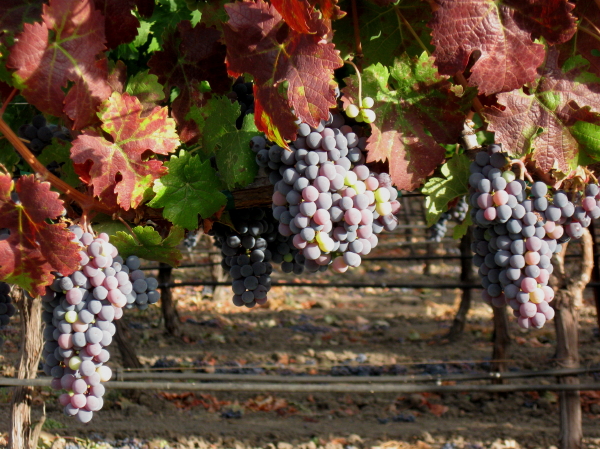
For those who do not have the benefit of living in Napa Valley, it is often a mystery why it is that one year a wine can be outstanding from a vintner and the next year it can be drastically different. Provided that the fruit is selected from the same vineyard and the vinification process remains the same, what is it that causes the wine to have a seemingly “split personality” some years?
The answer is relatively straight-forward in that it is Mother Nature whose nurturing hand has affected the grapes so drastically. 2006 in Napa Valley was a wacky weather year in that from January until mid-May the valley was plagued by seemingly never-ending heavy rainstorms. Thinking back a week or two prior to New Year’s Day 2006, Napa itself flooded from terrible storms. For northern California, rain means cool temperatures. While typically bud break would happen in the spring, it happened later that year for most vineyards and the grapes began slowly growing. With cooler temperatures, it also meant that the grapes’ skins remained thinner and with so much water that year, the fruit flavors were not going to be as tightly concentrated but instead more juicy in nature.
But does this mean that 2006 grapes were a proverbial wash in Napa Valley?
Not by a long shot. Depending on the varietal, grapes are harvested at varying times throughout the fall. The earlier harvested red wine grapes tend to have a soft fruit flavor leading me to describe several 2006 red wines often as the “polite cousin” to the “vivacious and outgoing” vintages from 2005. Grapes which were harvested later, however, such as Syrah and Cabernet Sauvignon, tend to be voluptuous and delicious with rich fruit. While not the bowl-you-over-powerhouses of the prior 2005 vintages, the trade off is that they are far more accessible and enjoyable now and require less bottle aging to be palatable to nearly every connoisseur.
So why did later harvested grapes such as Syrah and Cabernet Sauvignon managed to fair well in 2006 vinification?
In my opinion, it was again, due to Mother Nature. Mother Nature seemingly was concerned about these varietals and tormented Napa Valley with two weeks of triple digit heat. Not just 100 degree weather: but try, 112 degrees in Oakville or 120 degrees on a Sonoma hillside. This was scorching sweltering heat that was a danger to man and beast alike, yet those cabernet sauvignon grapes greedily grasped that heat and used it to push their development a little farther when harvested in October.
While many wineries are beginning to release their 2007 Cabernet Sauvignons, I elected this week to pull a 2006 vintage which shows off this phenomenon of 2006 fruit because there are still plenty of 2006 vintages out there for consumption and can be readily enjoyed. Sequoia Grove Winery in Napa Valley is highly adept at turning out a variety of well-crafted Cabernet Sauvignons. Their 2006 Napa Valley Cabernet Sauvignon is an outstanding example of how good that year was for Cabernet Sauvignon grapes and for giving a more intimate look at the actual grape without the palate getting lost in overpowering tannins, big spices and inaccessibly tart black fruit. Instead the 2006 Napa Valley Cabernet Sauvignon is readily and delightfully enjoyable as it shows off predominantly black fruit of blackberries, currants and plum, yet the fruit is uncharacteristically softer while remaining complex. Softer fruit in this case is not a detriment but instead is an elegant rounder compliment that the palate enjoys while being able to lift out flavors of chocolate, fennel and a sprinkling of cinnamon. The tannins (which can be overwhelming when a year experiences near drought conditions) are instead well-balanced and finely grained which lend smoothness to the wine and are a direct result to having had so much rain in the valley earlier in 2006. For those who are fans of grapes from the famed Rutherford Bench, the hospitality staff at the winery holds out that 60% of the grapes used in this Napa Valley Cabernet are from Rutherford.
The benefit of having a silkier Cabernet Sauvignon to enjoy is that it does not mandate the accompaniment of big fatty cuts of beef or fatty cheeses. Red wine, long recognized for its healthy antioxidants, gets to truly show off when the tannins are finely grained (like in the 2006 Sequoia Grove Napa Valley Cabernet Sauvignon) because it pairs beautifully with vegetarian fare. As a result, this week’s menu holds:
1) Grilled Marinated Portobello Mushrooms;
2) Herb Truffle Cauliflower Puree with Red Wine Reduction Sauce; and
3) Fresh Spinach Salad with Red Wine Reduction Vinaigrette.
Creating a red wine reduction sauce with shallots, thyme, wine, butter, water and dash of vegetable stock takes patience and a careful eye, but once completed yields a savory sauce which can dress up any meal.
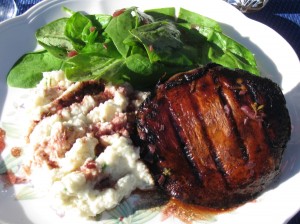
Portobello mushrooms are long recognized as being a thicker, “meatier” consistency which are quite filling and can substitute for the proverbial bit of steak that people long for on a plate. Marinated in a combination of fresh thyme from the garden, garlic, extra-virgin olive oil and balsamic vinegar creates a delicious, rich flavor with the headier flavors of the mushroom. The earthy nature of the mushrooms pairs deliciously with the 2006 Napa Valley Cabernet Sauvignon flushing out the spices and fennel notes in the wine.
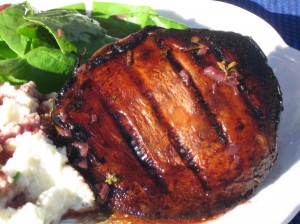
To add the texture of mashed potatoes, a cauliflower puree is created but in a step away from the traditional purees presently found in the restaurants. Truffle oil is a wonder addition to risottos and other fare. Logic would follow that it would add depth and sophistication to a cauliflower puree. It does and then some. To make the dish even more over the top, cream and margarine are heated to be added to steamed cauliflower, recently clipped chives and fresh thyme from the garden. Drizzled with the Red Wine Reduction Sauce and this is a vegetarian side dish that quickly transports the palate to heaven. The benefit of this side dish with the wine is that it avoids potatoes. Frequently the starch of potatoes does not fare well with Cabernet Sauvignon. The benefit of the cauliflower puree is that it allows the wine to continue to stand on its own merits and at full enjoyability.
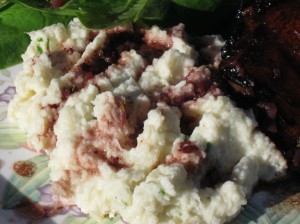
Finally a small simple salad is put together consisting of freshly picked spinach leaves tossed in Red Wine Reduction Vinaigrette. Having reserved 2 tablespoons of the actual Red Wine Reduction Sauce, whisked them into red wine vinegar creating an easy, rich and flavorful vinaigrette.
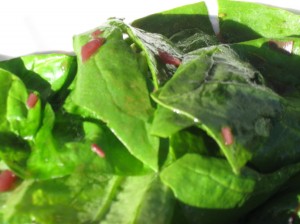
Who says healthy cannot be savory? It is a matter of how you combine flavors which determines if your dish is going to pack a punch on the palate. This vegetarian meal serves satisfying and sophisticated in flavors such that it can artfully masquerade as meat and potatoes on the palate. In the end it proves perfectly satisfying and a wonderful way to enjoy those softer, elegant 2006 Cabernet Sauvignons on an early warm September night.
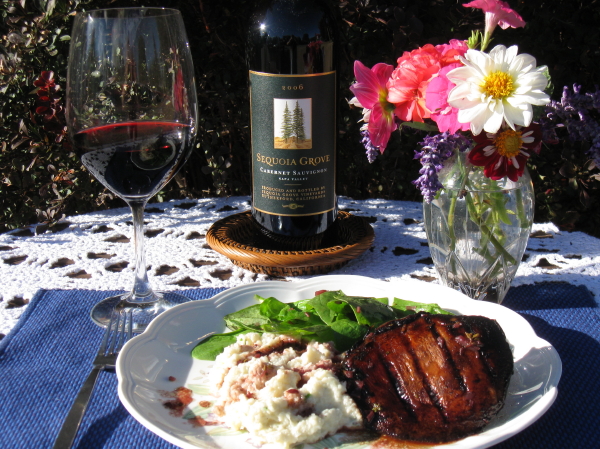
Comments Off on What’s in a Year? 2006 Cabernet Fruit